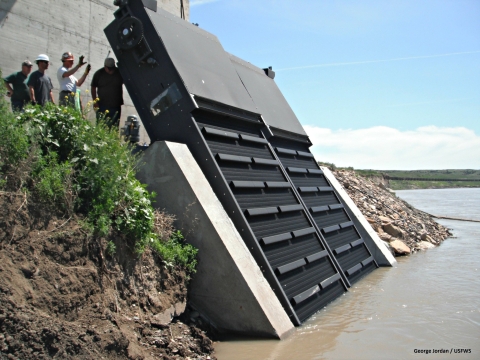About Us
Montana Fish and Wildlife Conservation Office is part of a network of field stations located throughout the nation that works to conserve fish and aquatic resources. Biologists from the Arctic Circle to the Florida Keys work to restore native species, including protect imperiled species and their habitats; monitor and control invasive species invasive species
An invasive species is any plant or animal that has spread or been introduced into a new area where they are, or could, cause harm to the environment, economy, or human, animal, or plant health. Their unwelcome presence can destroy ecosystems and cost millions of dollars.
Learn more about invasive species ; evaluate native fish stocks and their habitats; and prescribe remedial measures to fix problems.
Our Mission
Since 1871, the U.S. Fish and Wildlife Service has been applying science-based approaches to conservation challenges. We work with our partners and engage the public to conserve, restore, and enhance fish and other aquatic resources for the continuing benefit of the American people. Conservation is at the heart of what we do, and we recognize that we do this work for the American people–both the present generation who benefit today and future generations who will inherit our legacy of conserving America’s aquatic resources.
Our History
The U.S. Fish and Wildlife Service’s Kalispell Fishery Assistance Office was established November 1962 in Kalispell, Montana by order of President John F. Kennedy. The station was established to provide fishery management services to the nearby Blackfeet Indian Reservation. Three other Montana reservations and Glacier National Park were receiving fishery assistance from the Portland, Oregon Fisheries Assistance Office. The logistical need to consolidate these Montana operations was apparent.
In March of 1980, the Kalispell Fishery Assistance Office was combined with the Creston National Fish Hatchery to officially form the Creston Fish and Wildlife Center. However, this was changed again in 1989 when the assistance office and hatchery were separated, with Project Leaders being appointed for each office. In 1990, the management assistance office reorganized when funding from the Bureau of Indian Affairs was terminated and funding appropriation supported by the Montana Congressional delegation was once again returned to the U.S. Fish and Wildlife Service. This transition, which provided a substantial increase in funding, enabled the management assistance office to reorganize and accommodate the growing demands for technical services. In July 1991, the U.S. Fish and Wildlife Service established the Montana Fish and Wildlife Management Assistance Office (MT FWMAO) in Bozeman, Montana with sub-stations at Kalispell and Lewistown, Montana. This reorganization was done primarily to expedite the biological services provided to all Montana Indian Reservations, as well as, other Federal, State, and Service programs as requested.
During 1994, the Kalispell and Lewistown sub-stations were consolidated in Lewistown. This move was necessary to more centrally locate our technical assistance staff closer to the five (5) central and eastern Montana Indian reservations which receive most of our attention. During 1996, the MT FWMAO was further expanded to provide increased support for native fish conservation as a result of the closure of the Fishery Assistance Office in Yellowstone National Park.
Additional changes in staffing and funding occurred during 2010 when the Yellowstone River Coordinator’s Office and Northern Rockies FWCO were combined with the Montana FWCO for improved efficiencies and increased services for all partners.


